Content
Resinous ischnoderm is a genus of the same name of the Fomitopsis family. The species has several names: ischnoderm resinous-odorous, ischnoderm resinous, benzoin shelf, resinous tinder fungus. Knowing how to distinguish this inedible species will help when picking mushrooms.
What does resinous inoderma look like?
Ischnoderm resinous grows both alone and in groups. It has a rounded seated shape and a descending base.
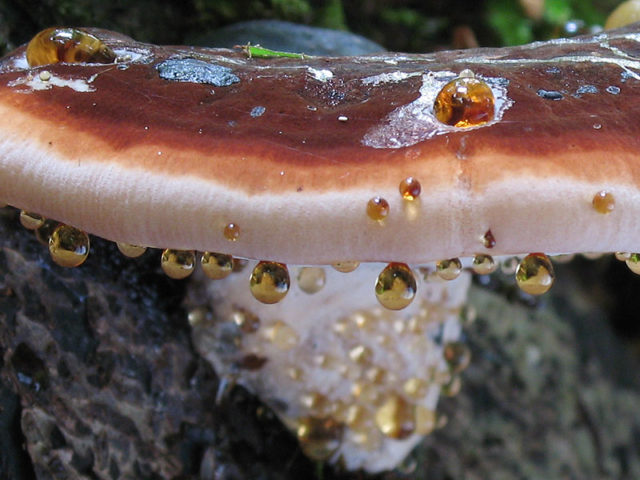
The size of the fruiting body does not exceed 20 cm, and the thickness of the cap is 3-4 cm
The look is painted in bronze, brown or red-brown color, the surface is velvety to the touch. In adult specimens, it is smoother, with black blotches. The edges of the cap are light, slightly curved around the circumference.
During active growth, a brown or reddish liquid is released on the surface.
Ischnoderm is characterized by a tubular hymenophore (part of the fungus under the cap), the color of which changes as the fruiting body grows. In young specimens, a creamy shade prevails, which gradually darkens and becomes brown.
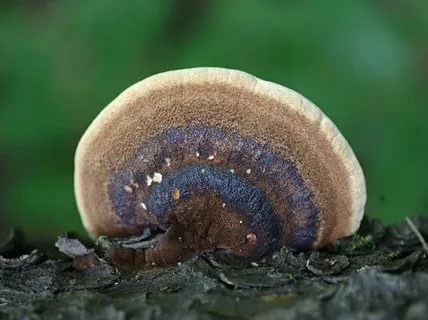
The view is distinguished by rounded, slightly angular pores.
Spores are elliptical, smooth, colorless. Young specimens are distinguished by juicy white flesh, which eventually takes on a light brown tint. Ischnoderma does not have a pronounced taste, its aroma vaguely resembles vanilla.
Initially, the whitish juicy tissue becomes woody, light brown as it grows, acquires the smell of anise. This mushroom variety is capable of causing the development of fir stem rot. The infection quickly spreads through the tree, which most often leads to the early death of the plant.
Where and how it grows
Ischnoderm grows in North America, Asia and Europe. However, the species is rarely seen. In Russia, it is distributed in deciduous forests, conifers and taiga regions. The fungus is classified as saprotrophs, annuals. He prefers dead wood, dead wood, pine and spruce stumps. In addition to the stem, it can provoke the appearance of white rot.
Is the mushroom edible or not
The mushroom belongs to the inedible group, therefore, it is strictly forbidden to collect and use fruit bodies in cooking. This can lead to poisoning and further health problems.
Doubles and their differences
The main false double of resinous ischnoderm is a representative of the same genus - varnished tinder fungus. It is also called "reishi", "lingzhi" and "mushroom of immortality". It differs from inshoderma in shape, color, large cap size, underdeveloped leg, large irregular pores of the hymenophore.

Resinous ischnoderm affects living trees, and varnished - dead wood
Ischnoderm twins include flat tinder fungus (flat ganoderma).
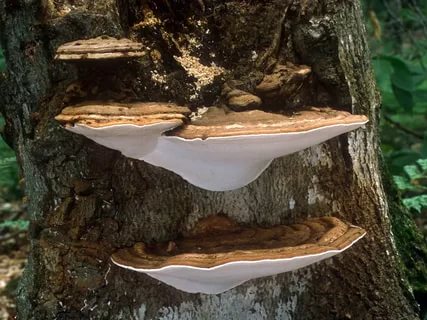
The fungus is ubiquitous, has a flat matte surface and deep pores in a multilayer hymenophore.
The fungus is also often confused with the tinder fungus (southern ganodrome), a relative of the flat tinder fungus. This species lives only in the southern territories, has a larger size and a lacquer-glossy surface.
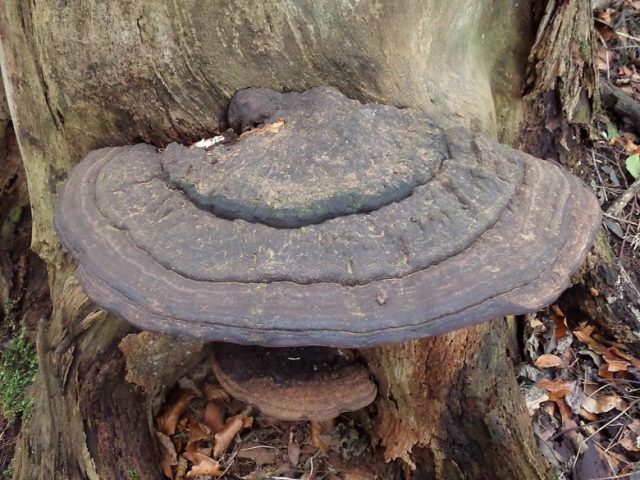
The hymenophore lacks an intermediate layer, the pores are larger and deeper
Another double is the expressive tinder fungus, which also belongs to the subspecies of the flat tinder fungus.
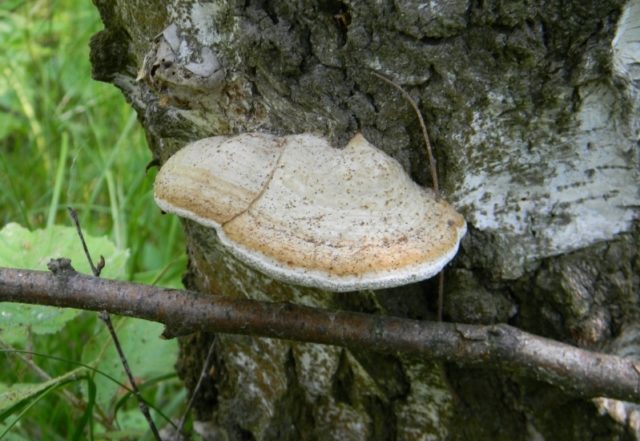
The hymenophore lacks an intermediate layer, the pores are larger and deeper
You can find out more information about finding tinder fungus in the video:
Conclusion
Ischnoderm resinous is an inedible species that is common in deciduous forests, conifers, and taiga regions. It has several false counterparts that can be easily distinguished by the size of the fruiting body, pores, and also by the color of the surface.








